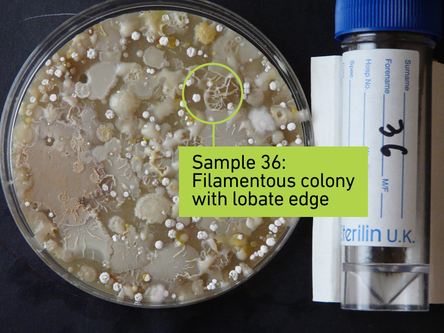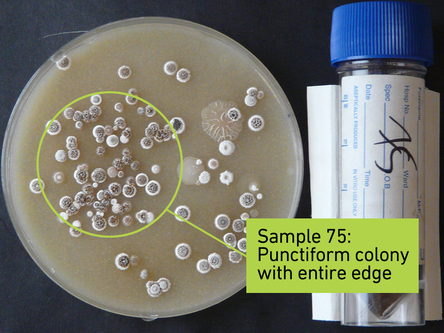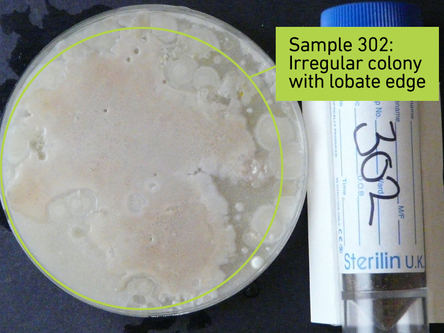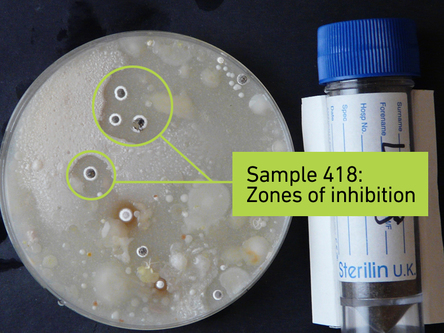Tracking your sample
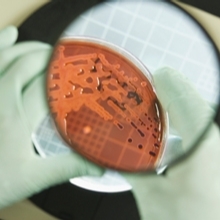
Your sample is now at the University of East Anglia for analysis. An expert team of scientists are looking at each soil sample and trying to identify any potentially interesting micro-organisms that are producing antibiotics. You can now see some example photos below.
Photos of your samples can be found here, on our Antibiotics Unearthed Facebook page. The photographs are organised by event (Garwnant Forest, Merthyr Tydfil and Kielder Forest, Northumberland) and are labelled with your sample number.
In the slideshow below, we have some examples of what to be looking for, using the 'Describing bacteria' image underneath for comparison. A full-size PDF version can be downloaded further down the page.
How would you describe these bacteria?

The scientists (and you!) can now spend time looking at your bacterial colonies. One of the things we are looking for is something called a ‘zone of inhibition’. This is an area around a single bacterial colony that has nothing else growing on it. This suggests that the bacterium is producing a chemical that is preventing other bacteria from growing. This is potentially an anti-bacterial compound, and something the scientists might want to look at in more detail. Find your sample and look for zones of inhibition.
Please leave any comments you have on the Facebook images! These could be about any zones of inhibition you see, any colonies that you think look interesting, or questions about the sample. Also feel free to comment on other samples that you find interesting. When describing your samples, you can download and use the following descriptions for the colonies.

